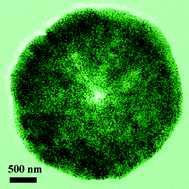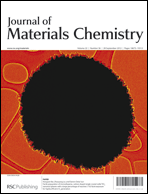Porous carbon-modified MnO disks prepared by a microwave-polyol process and their superior lithium-ion storage properties†
Abstract
A rapid and economical route based on an efficient microwave-polyol process has been developed to synthesize a disk-like Mn-complex precursor. It can be topotactically converted into porous C-modified MnO disks by post-heating treatment. The as-formed porous C–MnO disks with an average thickness of ∼50 nm and diameters up to 3 μm possess a large specific surface area of 75.3 m2 g−1. Interestingly, each C–MnO disk has a single-crystal-like nature, which is built up by the assembly of carbon-modified MnO


 Please wait while we load your content...
Please wait while we load your content...